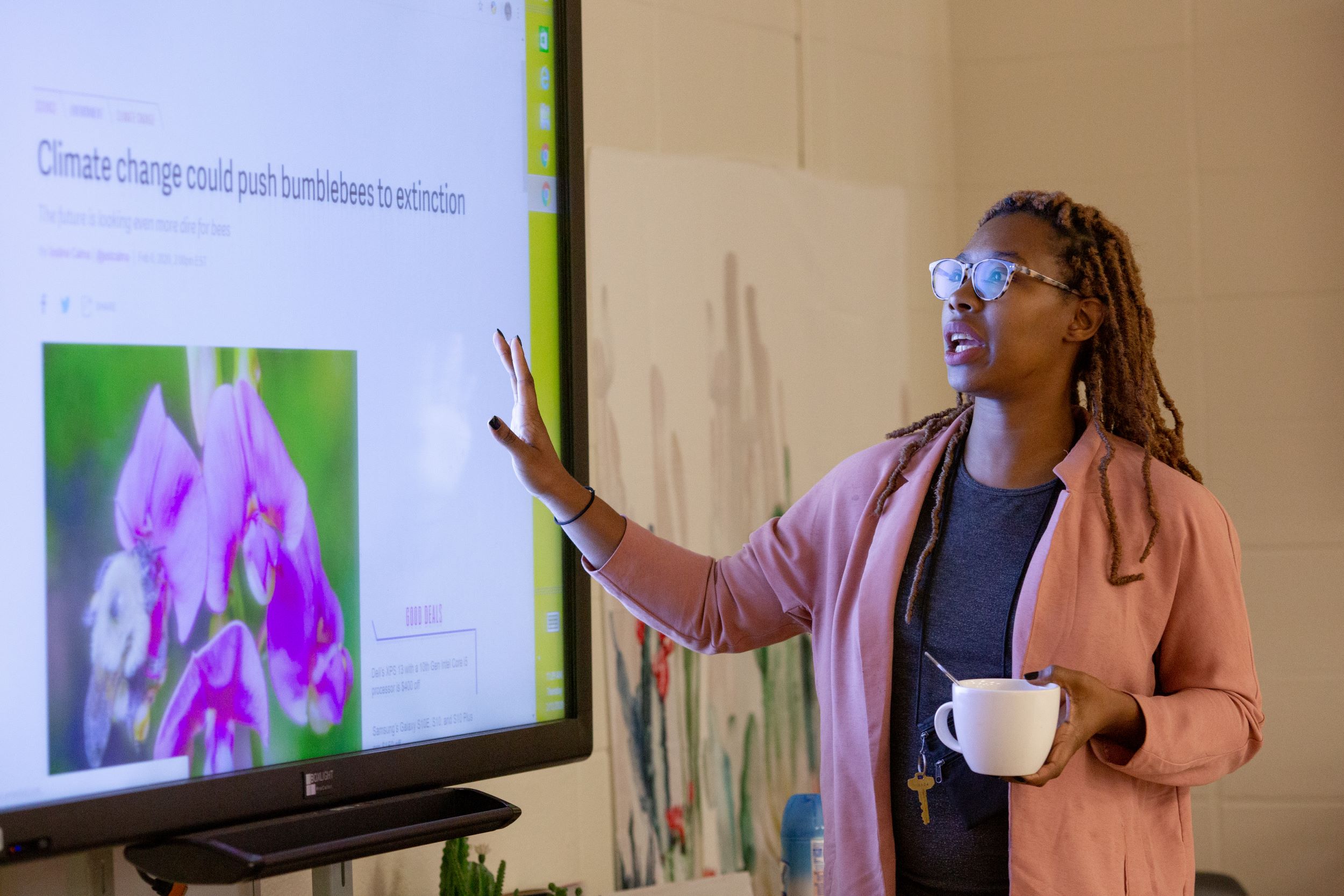An earlier version of this post was published in September, 2019.

“Avoiding climate breakdown will require cathedral thinking. We must lay the foundation while we may not know exactly how to build the ceiling.” – Greta Thunberg, 16-year-old climate activist and movement leader.
In early August, the United Nations Intergovernmental Panel on Climate Change published its Sixth Assessment Report. The report described the impacts of human-caused climate change on weather patterns around the world, and emphasized the urgent need to take significant action to limit further warming. In this same month, many people around the world experienced these impacts firsthand, and more and more people are waking up to the realities of the climate crisis. So how can you and your students face the existential challenge of climate change with the transformational, solutions-focused energy it demands? We think Project Based Learning can help.
One way to think about the climate crisis is as the project to end all projects—a massive, collaborative, interdisciplinary endeavor with an authentic, incredibly high-stakes outcome: the future of our planet. This project requires every single person on Earth to deepen our knowledge and build our skills, and requires us to work together in unprecedented ways.
We often talk about Project Based Learning as a pedagogy that equips students for the future. However, our youth are fighting right now to ensure that they have a future. Through movements like Sunrise and the Youth Climate Strikes, young people around the world recognize the urgency of the crisis we’re in, and are leading the charge to transform our economic, social, and political systems in time to save the planet.
So how can we as educators use Project Based Learning to support this movement? How can we help our students adapt to the realities of an already changing climate while also empowering them to stop climate change from getting worse? One way to take action within our own spheres of influence is to design projects that teach core content and skills in the context of authentic climate action.
The following ideas offer entry points to engaging students in climate-related PBL:
Consider your core content
Every single content area plays a role in climate adaptation and mitigation. In math class, you might have students analyze energy use and develop an action plan and budget for transitioning your community to renewable energy sources. In an ethnic studies class, your students might read about environmental racism and analyze proposed climate mitigation strategies according to their impacts on frontline communities, or they might study the strategies that indigenous people around the world have been using to fight for climate justice. In P.E./health class, students might research the health and climate impacts of walking and biking vs. driving, or of plant-based diets vs. meat-centric diets, and create social media campaigns to share what they learn.
Tap in to community projects
Find out what local government officials, farmers, activists, and engineers are doing to address climate change. Many communities are crafting climate resilience or emergency management plans, or working to improve public transportation or energy efficiency programs. How can your students contribute to these efforts?
Collaborate with colleagues
The challenges posed by climate change are inherently interdisciplinary, and require us to think across disciplinary boundaries. Work with your colleagues in other content areas to explore these points of intersection and develop collaborative projects. For example, a Biology teacher and an Economics teacher might co-facilitate a project in which students identify food production techniques that are both ecologically and economically sustainable, and an ELA teacher and Social Studies teacher might work with students to craft argumentative editorials about policies related to climate refugees.
Remember that equity and justice are core to any viable climate solution
Climate change has already had a disproportionate impact on communities of color, low-income communities, and the Global South—and many of these communities have contributed the least to the problem. Ensure that students understand the relationships between climate change and systemic oppression, and that any solutions they craft take into account the voices and needs of frontline communities.
Leverage the PBLWorks project library
Start with an idea from the library and adapt it to meet the needs of your students and your community. The following projects offer great places to start:
- Waiting on the World to Change: How can we make change happen in our community?
- Broken Laws: How can we change the law to make our society better for everyone?
- Shrinking Our Footprints: How can we use data to reduce our families’ impact on the environment?
- There’s What in My Water?!: How safe is my [water, air, soil, food]?
- Ready for Anything: How can we keep our communities safe in the face of natural hazards?
- Hunger: How can we impact hunger in our community?
- Species Survival: How can we protect an endangered species in our area?
Follow the lead of your students, and make space for their feelings
It’s likely that many of your students are already concerned about the tenuous state of the planet. Learn about what students are already doing or thinking about related to environmental justice, and use projects to help them see how the content you teach supports their passions. Many of your students may also feel overwhelmed and powerless in the face of this immense challenge. Taking these feelings seriously while providing students with concrete opportunities to make a real impact will help students to access their power and contribute to real solutions.
Working with students on projects related to climate change is a powerful way to prepare them for the world beyond school. It’s also one concrete way you can work to ensure they still have one.
